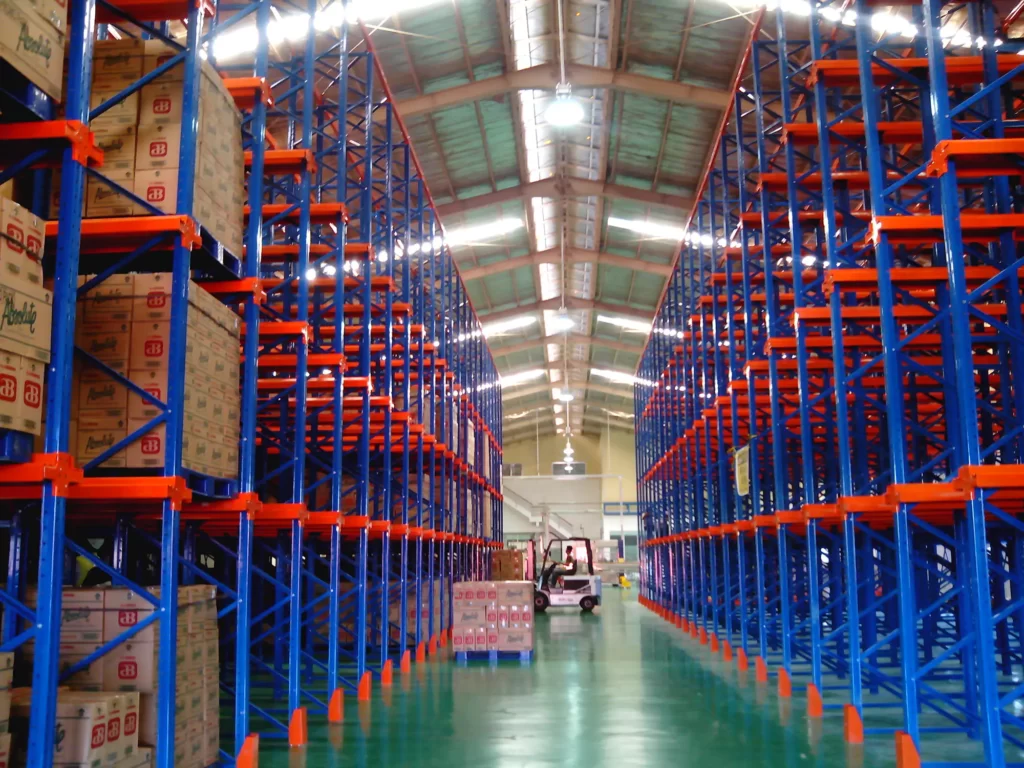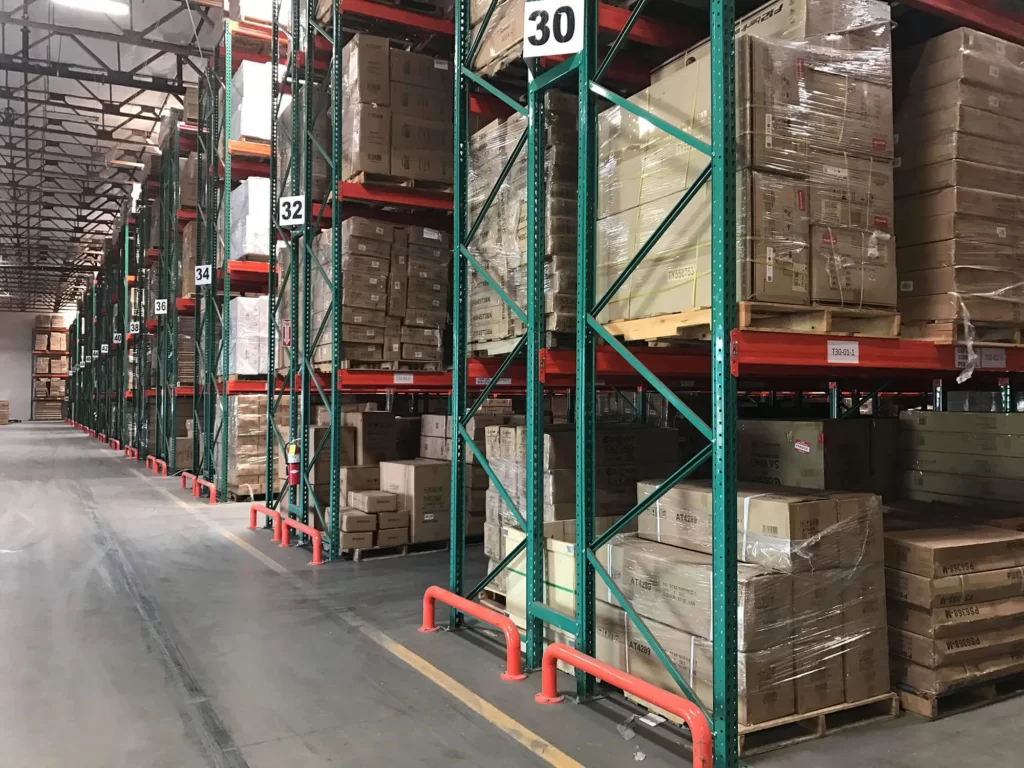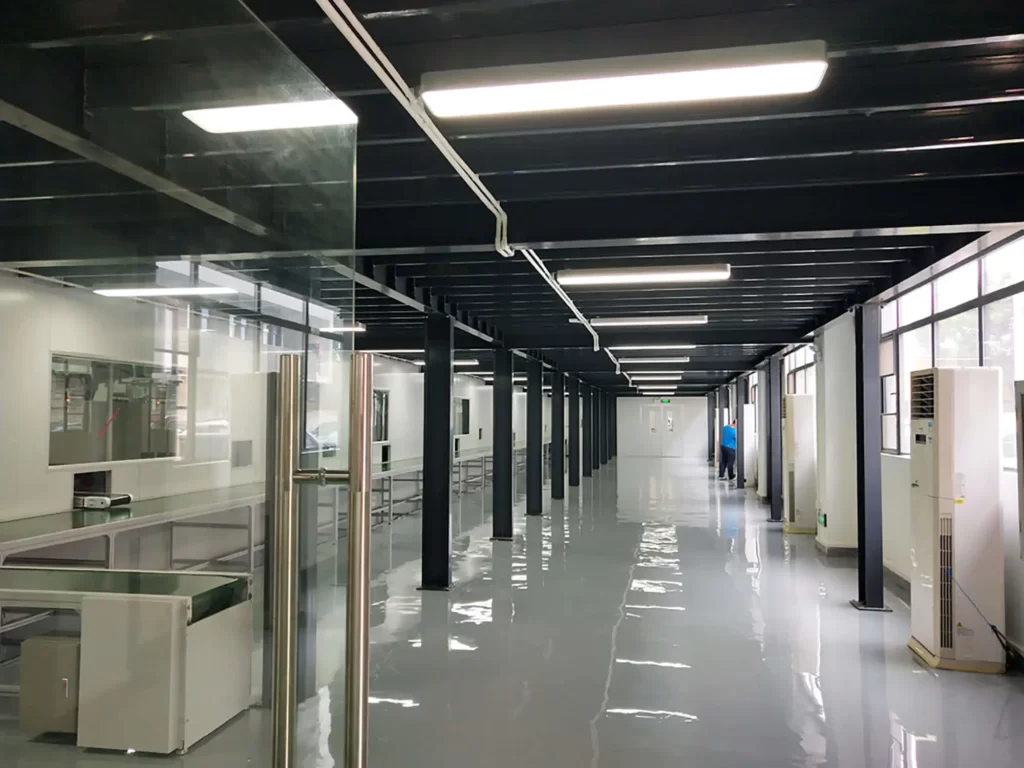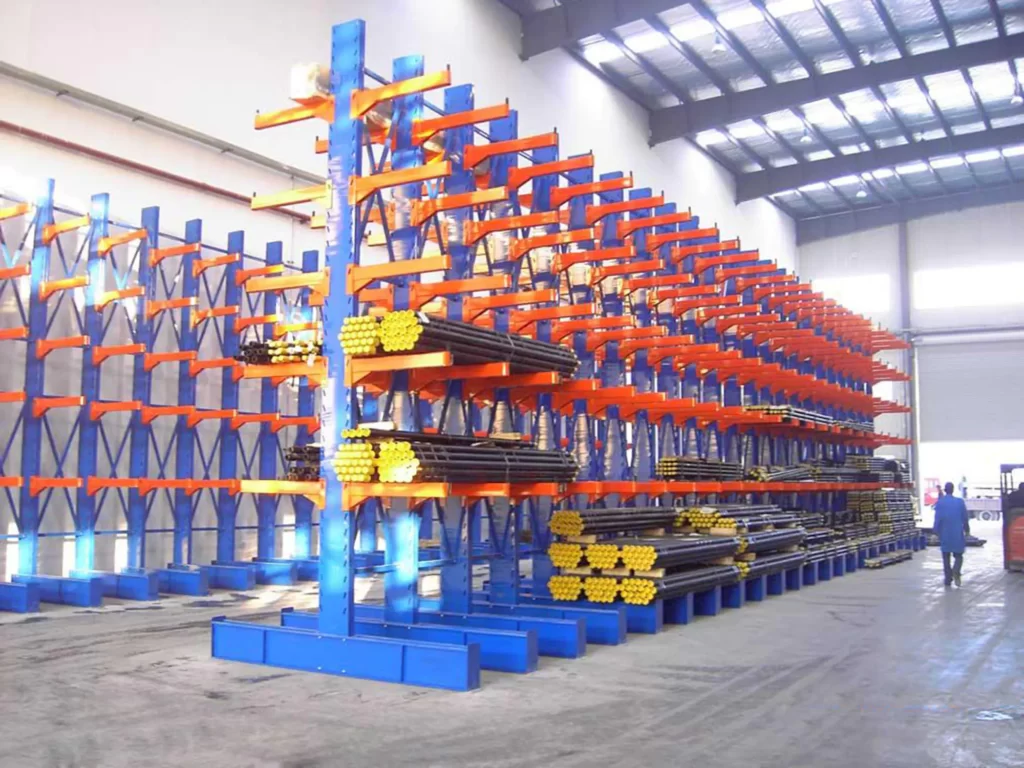Greetings, and welcome to this post about cold storage design, where we will talk about everything you need to know to build a cold storage warehouse that is not only efficient but also highly functional. From transporting food items that spoil quickly, such as fresh produce, meat, and dairy products, to storing pharmaceuticals, a cold storage facility is absolutely necessary.
Factors including temperature control, humidity management, insulation, and heat removal must be carefully considered while designing a cold storage facility. Most importantly, maximizing productivity requires carefully considering your unique needs and tailoring the size and layout of the cold storage warehouse accordingly.
In this article, we’ll examine each of these points in detail and talk about how they play a role in the design of a cold storage facility as a whole.
Cold Storage Warehouse Design Considerations.
1. Total Area of the Warehouse
Cold storage warehouse usefulness, efficiency, and cost are all impacted by the overall space needed for the building, making it a crucial aspect of the design process.
The total area of the warehouse means you have to include everything—from storage rooms to parking and administrative offices.
Here is a breakdown of the types of spaces you would have to keep in your mind while designing a cold storage warehouse.
Storage Capacity
The amount of space needed for storage should be your top priority. The storage volume can be calculated by multiplying the total weight of the products to be stored by the storage space required per unit weight. The density, packaging, and stacking of the products all play a role in how much storage space is needed per unit weight.
Handling and Processing Area
When calculating the overall space needed, make sure to factor in a spot for processing and handling. Spaces for receiving, dispatching, sorting, grading, cleaning, packaging, and labeling are all included here. There needs to be enough room for machinery, workers, and product storage and transport.
Cold Storage Rooms
The quantity, size, and required temperature of cold storage rooms all affect the total area needed. Depending on the type of goods being stored, a number of various conditions are needed, including temperature and humidity. Fruits and vegetables benefit more from being stored in smaller rooms because of their adaptability and lower energy consumption.
Loading Docks and Parking Spaces
Vehicle size and quantity used for loading and unloading goods should inform the layout of the loading dock space. There needs to be enough space for all of the vehicles owned by the business and its employees.
Administrative and Office Space
The amount of office and administrative space needed is proportional to the size of the facility and the number of workers needed to run it efficiently.
Equipment and Machinery Space
When calculating the total amount of space needed, don’t forget to include the area needed for machines and other equipment. Compressors, generators, refrigeration units, and other essential pieces of equipment are housed here.
Utility Room
The utility room’s square footage must account for the building’s overall layout and the machinery in use. This space needs to be planned to accommodate the utility systems’ electrical and plumbing components, as well as any backup generators.
2. Type of the Cold Storage Warehouse
Determining the type of cold storage warehouse to be used is essential to designing a cold storage building. The purpose for which the cold storage is intended will determine the suitable type of cold storage warehouse. Different types of cold storage facilities are available depending on the temperature requirements.
- Products that need to be pre-cooled before being placed in cold storage rooms can do so in special pre-cooling chambers. The optimal storage temperature for these goods is between 0 and 8 degrees Celsius. Harvested fruits and vegetables are often pre-cooled in chambers before being sent to the cold storage area.
- Products are stored in cold storage rooms or cool rooms at temperatures between +8 degrees Celsius and +14 degrees Celsius. Products that don’t need to be frozen but still need to be stored coldly are kept in these rooms. Dairy products, beverages, and even some types of fruit and vegetables fall under this category.
- Cold storage rooms are built for storing items between -1 degrees Celsius and +8 degrees Celsius. Meat, poultry, and shellfish are frequently processed in these chambers.
- Storage freezers maintain temperatures between -18 degrees Celsius and -24 degrees Celsius, which is ideal for keeping frozen foods. These compartments are frequently used to keep frozen foods, including vegetables, meat, and seafood, frozen for later consumption.
- Blast-freezing chambers can drop temperatures to as low as -35 degrees Celsius to -45 degrees Celsius, making them ideal for blast-freezing items. Fast-freezing foods, including seafood, meat, and fruit, are commonly stored in these rooms.
Cold Storage Building Design Considerations.
1. Floor Plan Design
The floor plan is a vital component that should not be disregarded when constructing a cold storage facility. The size and quantity of storage rooms required to accommodate diverse products is one of the key factors when developing the layout of a cold storage facility. Cold storage facilities should be divided into numerous tiny rooms rather than one large room, according to industry standards. This is especially true for preserving fruits and vegetables, which require highly specific temperature and humidity conditions to maintain their quality and freshness.
The following are some of the reasons why compact spaces are ideal for preserving perishable foods:
- The ideal storage conditions for fruits and vegetables vary depending on the type of product being stored. Tomatoes, for example, need a range of 55-65°F and 85-90% humidity. Potatoes in contrast need a range of 45–50°F and 95–98% humidity. The cold storage facility can be divided into smaller rooms, each of which can be controlled independently for temperature and humidity.
- Certain fruits and vegetables produce ethylene gas, which can cause other products to ripen or spoil faster if stored together. For example, bananas, apples, and tomatoes all produce ethylene gas, while carrots, cucumbers, and lettuce are sensitive to them. By storing incompatible products in separate rooms, the risk of premature ripening or spoilage can be minimized.
- As mentioned earlier, some products produce ethylene gas, which can build up in storage rooms over time. To prevent this buildup, these products need to be vented regularly. Storing these products in small rooms makes it easier to vent and maintain proper air circulation.
- Fruit and vegetable storage rooms require regular cleaning and sanitation to prevent mold and bacteria growth. Small rooms are easier to clean and sanitize compared to larger rooms, making maintenance more manageable. Additionally, small rooms can be more energy efficient since it is easier to maintain the required temperature and humidity levels in a smaller space, reducing energy consumption.
2. Using Insulated Panels
Cold storage facilities can’t function without insulated panels. To prevent heat from escaping and to keep humidity levels steady, these panels are used to build the walls, floors, and ceilings of cold storage rooms.
Insulated polyurethane panels are widely employed in the building of cold storage facilities. Polyurethane foam has a high R-value, making it a good insulator because of its high resistance to heat transmission.
The thickness of polyurethane insulated panels for a cold storage facility should be determined by the temperature range needed for the facility. Guidelines for determining the proper panel thickness are provided below.
- Use 6mm panels when the temperature is 10 degrees Celsius or above.
- At temperatures between 4C and 10C, use 8mm panels.
- For situations with temperatures between -4°C and 4°C, use 10mm panels.
3. Heat Removal
Heat removal is a critical aspect of the design of a cold storage building, as it plays a key role in maintaining the required temperature and humidity levels. The total amount of heat that needs to be removed from a cold storage facility depends on various factors, such as the size of the facility, the products being stored, and the ambient temperature and humidity.
All cold storage facilities must exclude heat from a variety of sources. Thanks to the differences between indoor and outside temperatures, heat can be conducted through the walls and into the cold storage facility. The walls of the facility must be built with high quality insulation materials, such as polyurethane insulated panels, to reduce the amount of heat lost or gained through the walls.
- Fruits and vegetables are still breathing after they have been picked because they are live beings. Due to the production of heat and water vapor during breathing, the internal environment of the cold storage facility may become too warm and humid. To get rid of this heat, the building needs efficient cooling and ventilation systems that can also regulate humidity.
- Certain fruits and vegetables, including tomatoes and peppers, produce latent heat as they ripen, which can be used to heat up a nearby field. In order to keep the cold storage facility at a comfortable temperature and humidity level, this heat must be dissipated through the installation of effective ventilation and cooling systems.
- Service load from lighting, ventilation, and occupant traffic: The heat produced by the operation of lights, fans, and other equipment must be dissipated by the building’s cooling systems. Temperature swings can be caused by people entering and exiting the building; therefore, efficient ventilation and cooling systems are essential.
- To remove the heat generated by these various sources, a cold storage facility must be equipped with an appropriate cooling system. This can include refrigeration units, evaporative coolers, or air conditioning systems, depending on the specific needs of the facility. The cooling system should be designed to efficiently remove the total amount of heat generated while maintaining the required temperature and humidity levels.
4. Controlling Humidity
Designing cold storage facilities with relative humidity control in mind is essential for maintaining product quality and freshness over the long term. How much moisture is in the air in a cold storage facility as compared to how much moisture the air can keep at that temperature is referred to as relative humidity (RH).
The pace at which products lose water through transpiration can be regulated by maintaining a stable relative humidity level. The rate of transpiration is affected by the air’s relative humidity (RH). Low RH levels can increase transpiration rates, causing wilting, softening, and diminished juiciness; high RH levels aid in preserving the marketable weight, appearance, nutritional content, and flavor of produce.
To raise the relative humidity (RH) in the storage room, you can:
- Run a humidifier there. When relative humidity (RH) is low, such as in arid regions, this becomes very significant. To avoid either excess moisture buildup or loss, it’s important to manage the storage room’s airflow and ventilation based on its current load. The relative humidity is kept constant throughout the warehouse thanks to ventilation and air conditioning.
- Refrigeration systems serve a critical role in managing the temperature and humidity levels inside the cold storage facility, including maintaining refrigeration coil temperature within 2°F of the storage room air temperature. For optimal RH control, keep the refrigeration coil temperature within 2 degrees Fahrenheit of the air temperature in the storage area.
- To raise relative humidity (RH), one strategy is to wet the floor of the storage room. This strategy is typically employed in dry, hot settings when relative humidity is low.
5. Temperature Control
Temperature control is a crucial aspect of designing a cold storage building. Temperature affects the respiration and metabolic rates of fruits and vegetables, which ultimately determine their shelf life. Higher temperatures accelerate respiration rates, leading to faster deterioration of produce. On the other hand, lower temperatures slow down the ripening and senescence processes, thereby extending the storage life of fruits and vegetables.
A reliable refrigeration system is essential for keeping things at the right temperature. The refrigeration system should keep the whole warehouse at an even, comfortable temperature. Cold storage rooms normally keep temperatures between -2 degrees Celsius and 15 degrees Celsius, though this ranges from product to product.
The temperature in the warehouse must be maintained at all times. Uneven temperatures can be the result of poor insulation or unpredictable airflow. Thus, it is critical to have sufficient insulation and air movement to maintain a steady temperature in the storage area.
Having both a cooling system and a way to keep tabs on temperatures is crucial. These gadgets can keep an eye on temperatures and send alerts to the right individuals if something goes wrong. There are a variety of storage room temperature monitoring systems available, the simplest of which are simple thermometers and more sophisticated automated systems with warnings and notifications.
Conclusion: Cold Storage Design
While planning the layout of a cold storage facility, it’s important to think about things beyond only the temperature and humidity. The cold storage facility depends on the temperature range necessary for storing goods. A cold storage facility’s floor plan is important since it directly impacts how well the building operates. Several rooms in the cold storage facility, each with its own controlled temperature and humidity, are necessary to preserve the kept goods’ integrity. Businesses can improve the effectiveness of their cold storage facility’s effectiveness and protect their perishable items’ quality and safety by knowing and applying these design factors.








